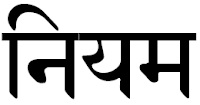It is often quite confusing for those interested in beginning a regular yoga practice to choose from all the yoga studios online. Which style of yoga would be best suited for them, can be a major concern. Before they figure out which class they’d be most interested in taking, they need to know what the differences are. Discounting Bikrams, which is controversial (besides, all Bikrams is hot yoga, but all hot yoga is not Bikrams), the differences between the other styles aren’t so clear. Hatha and Ashtanga yoga may appear to the novice as the same style, but yet they are often found to be very different when put into actual practice.
Let’s start with Intensity
Hatha yoga is often used as an umbrella term that encompasses all styles of physical yoga practice, including Ashtanga, but yoga studios that typically promote the slower, gentler yoga classes are known as Hatha yoga. These less challenging classes are generally considered more appropriate for beginners. Even though Hatha classes are commonly taught at a relatively low intensity level, it is still best to speak with each individual instructor beforehand to decide if the class is right for you. Some yoga instructors teach Hatha yoga classes at a more strenuous level than others. Some studios assign a numerical value to the difficulty level, such as 1, 2 or 3, with level 3 being the most demanding class.
Flow (or pace)
In Sanskrit the word for flow is “Vinyasa” and this determines the difference between Hatha yoga and Ashtanga yoga in terms of the class’s structure. Whenever you see the word Vinyasa or flow added onto the end of the class or studio name, this probably means that you will be moving from Asana (posture) to asana without stopping (or in a flow). This is usually the way Ashtanga yoga is taught. Hatha yoga, on the other hand typically goes into one asana, holds the pose, and then comes out of it after a determined amount of time. With Hatha yoga there isn’t any transition between each asana as there is in Ashtanaga yoga classes.
Primary Objectives of Hatha Yoga
Hatha yoga practice focuses on perfecting the asanas and doing pranayama (breath control), to increase the flow of prana (life force) through the nadis (channels throughout the body through which the prana flows). Prana is similar to the concept of chi (or Qi). Pranayama is the scientific practice of first controlling and then directing the prana through breathing exercises. Hatha works to balance increase this flow of energy. Asana and pranayama practice are part of Ashtanga yoga as well, but they are only two of the “Eight Limbs” (aka branches or objectives) of Ashtanga.
So basically, when you join a Hatha class it means that you will get an easy, gradual introduction to the most basic yoga asanas and then strive to perfect them. It’s unlikely you’ll work up a sweat in a Hatha yoga class, but you probably will end up leaving the class feeling taller, looser, and more relaxed. Posture is also usually improved.
Primary Objective of Ashtanga Yoga
A student or practitioner of Ashtanga yoga not only works on asanas and pranayama but also all the other six limbs which are; yama (the do not’s), niyama (the do’s), pratyahara (withdrawal of senses), dharana (concentration), dhyana (meditation) and Samadhi (bliss or effortless meditatio). The Yamas & Niyamas are yoga’s ten ethical guidelines and are the foundation of skillful living. Pratyahara is a means of withdrawing all sensory perceptions. Dharana, dhyana and samadhi are connected, being successive stages which lead to enlightenment.
Today, Ashtanga yoga is based on ancient yoga teachings that were popularized and brought to the West by K. Pattabhi Jois in the 1970s. It’s a more rigorous style of yoga that follows a specific sequence of postures similar to Vinyasa yoga (both styles links every movement to a breath). Ashtanga performs the exact same asanas in the exact same ordered sequence. This can a hot, physically demanding practice and you will break a sweat.
Summary…
Hatha Yoga has become the most popular style of Yoga in the United States. It focuses on the physical well-being of a person and teaches that the body is the vehicle of the spirit. There are lot of different Yoga Styles that have their roots Hatha Yoga, but all these styles strive to balance the mind, the body, and the spirit through the asanas, although the emphasis sometimes varies. Some put the emphasis on the strict alignment of the body while others focus on the coordination of breath and asana.
Ashtanga yoga may be the perfect yoga for those who want a serious workout. Students and participants move through a series of flows, sequencing from one asana to another in order to increase strength, flexibility and stamina. This is not for beginners or anyone who taks a casual approach to fitness. Ashtanga Yoga Practice involves performing challenging sequence of poses with Ujjayi Breathing and vinyasas (a flow of postures). “Power Yoga” is based on Ashtanga.
*Rae Indigo is ERYT500

 The second of the five Niyamas is Samtosha (also Santosha) – a Sanskrit term meaning contentment or satisfaction. The word Samtosha is derived from the Sanskrit root word ‘tush’ which means to be satisfied, pleased, or delighted, as well as quiet or calm.
The second of the five Niyamas is Samtosha (also Santosha) – a Sanskrit term meaning contentment or satisfaction. The word Samtosha is derived from the Sanskrit root word ‘tush’ which means to be satisfied, pleased, or delighted, as well as quiet or calm.

